Review by Tim Robins
WARNING: SPOILERS AHEAD!
The TARDIS takes the Doctor and Donna to the furthest edge of adventure. To escape, they must face the most desperate fight of their lives, with the fate of the universe at stake.
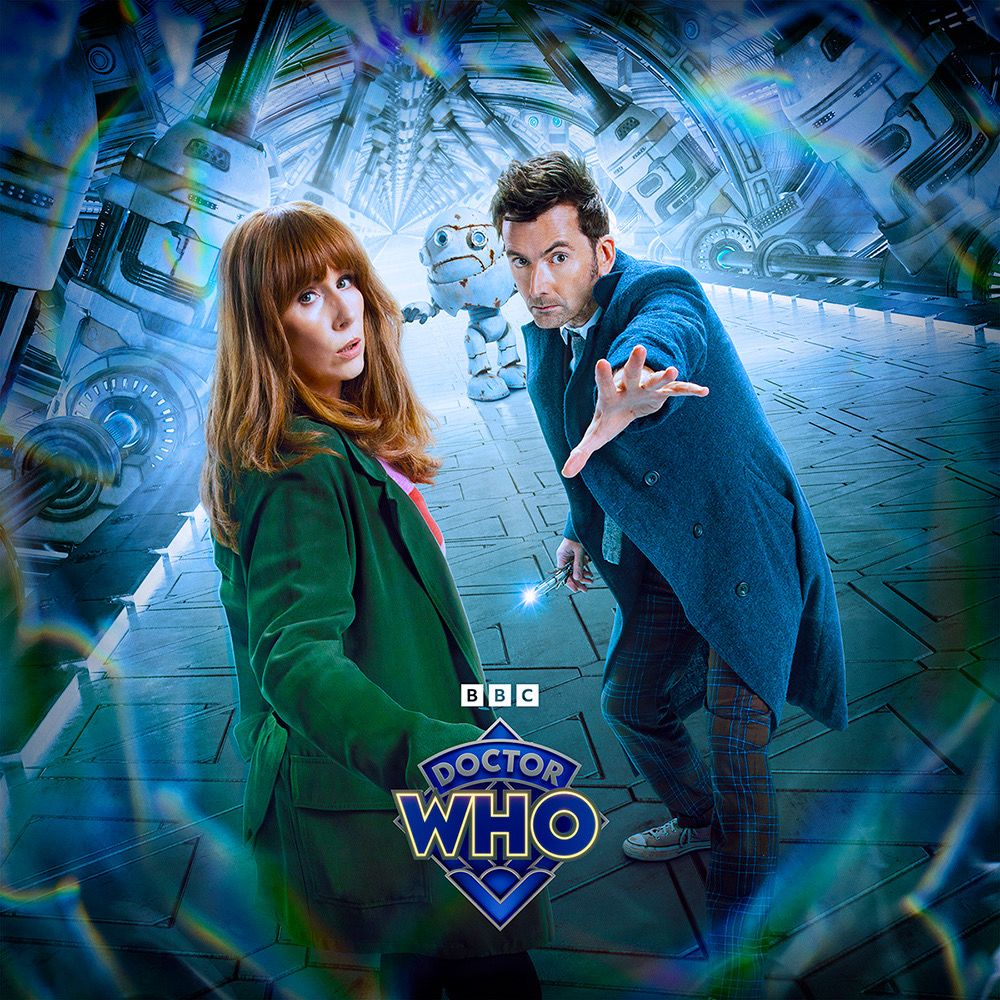
After 60-years of existence, Doctor Who can still spring viewers with more than a few surprises. In contrast to its action-packed predecessor, “The Star Beast”, “Wild Blue Yonder”, the second of three anniversary specials, was a spooky two hander between David Tennant and Catherine Tate, mostly set in a long sci-fi corridor (this seemed something of a joke about the series’ fondness for corridor sets).
Not much was known about the story before airing. All but a handful of scenes near the end, were filmed in a studio and so were inaccessible to photographers. Showrunner Russel T Davies also explained that he wanted the story to surprise people. It is easy to see why.
“Wild Blue Yonder’ (not to be confused with the 2005 Werener Herzog directed fantasy film of the same name) was a mystery story that grew creepier and creepier the more the travellers and we learnt about the situation. For that reason, any discussion of the story is very likely to spoil your enjoyment. So, if you haven’t seen the special but intend to, jump ship now – oops, I’ve already said too much.
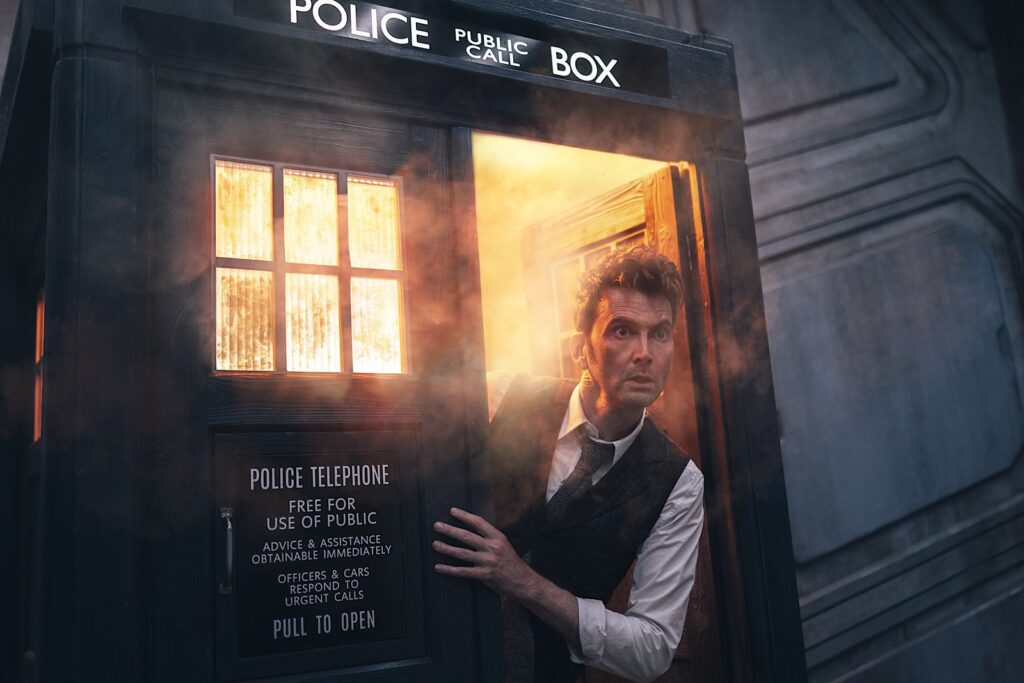
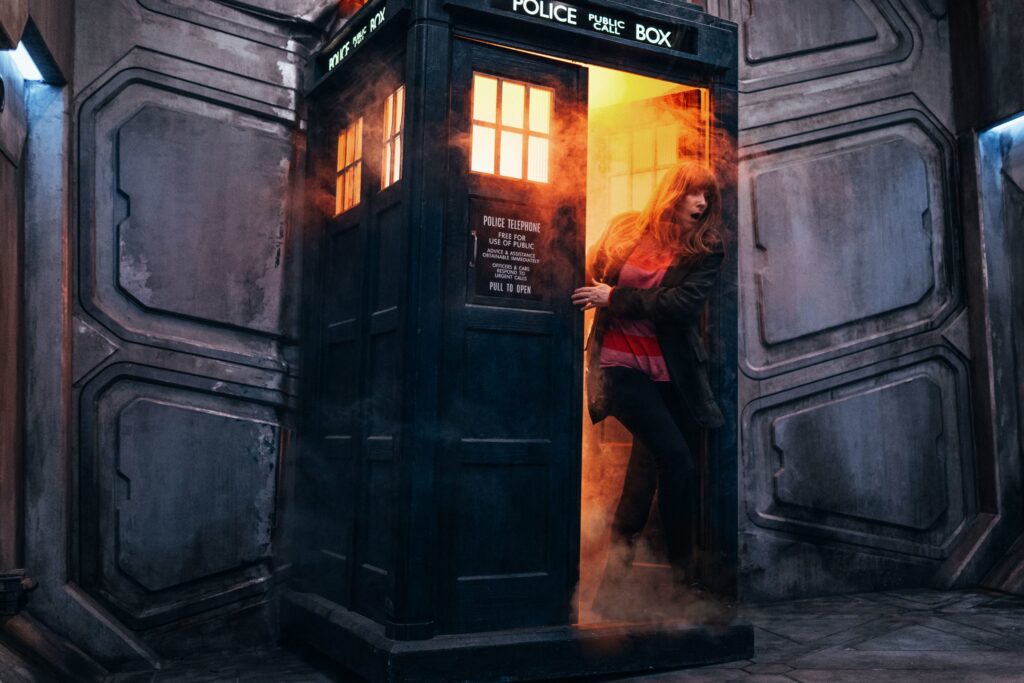

Despite being set in a mostly well-lit environment, “Wild Blue Yonder” succeeded in being incredibly scary; especially since The Doctor and Donna are unceremoniously dumped by the TARDIS into a ship that is reminiscent of the world in Valve’s video game, Portal. The TARDIS then abandons the travellers by activating its Hostile Action Displacement System, scarpering off until the danger has passed – and carrying off the Doctor’s “sonic” for good measure.
The only other clue that the travellers are in danger is that the TARDIS has chosen to accompany their exit by playing “Wild Blue Yonder”. The tune was originally titled “Army Air Corps” but over time has undergone changes to the title and verses. Although “The Wild Blue Yonder” referred to the sky, the term has also come to refer to space and was played by NASA during Apollo 15’s lift-off from the moon.
Nothing feels quite as threatening as being alone in a large space without anyone else around (try walking around the scrubland of Los Angeles looking for the connection between the Metro and the airport). There’s a slight tincture of MR James’s ghost stories when the travellers spot a figure in the far distance. It’s a robot, walking slowly along the corridor to the echoing voice of a computer, every now and then, intoning words in an alien language and simultaneously, inexplicably reconfiguring the ship.
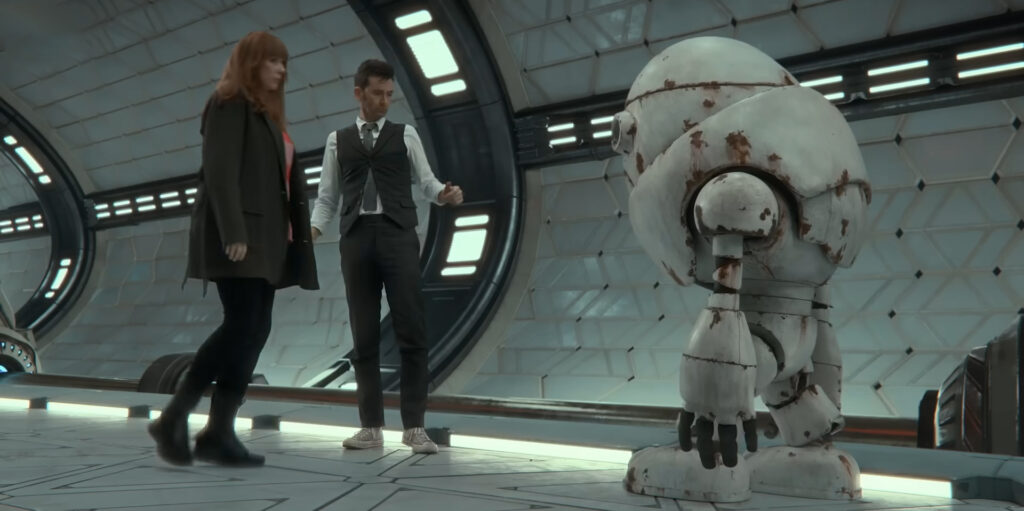
The script, by showrunner Davies, sets up questions whose solutions lead to more questions. Why is the robot walking along the corridor? What is the meaning of the ship’s words? Why is the dead body of the ship’s pilot orbiting the hull? And how can The Doctor and Donna be in two different places at the same time? This latter question arises in one of the creepiest moments in the story, where our own knowledge of editing leads us to question whether all the characters we are watching are who they seem to be.
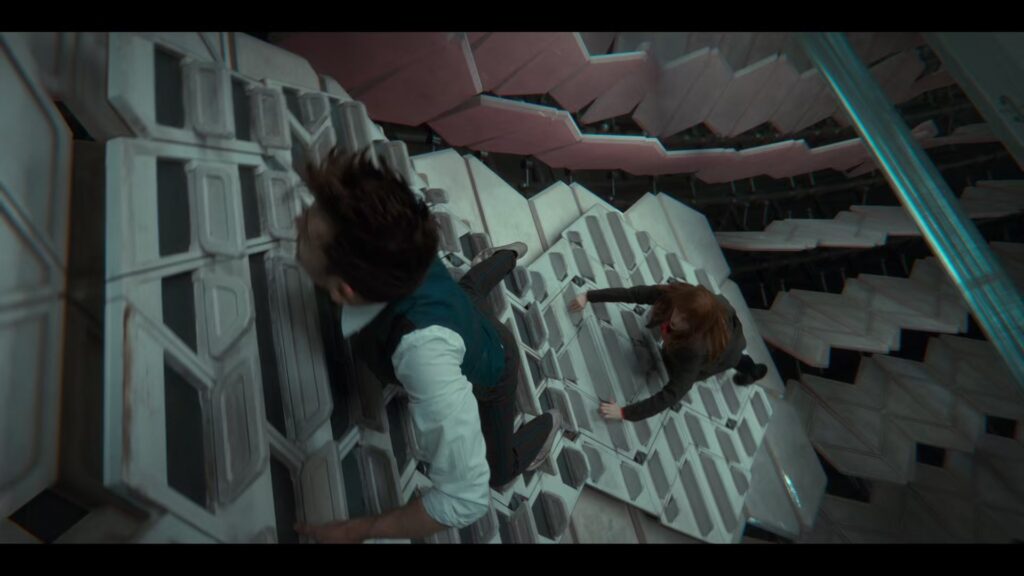
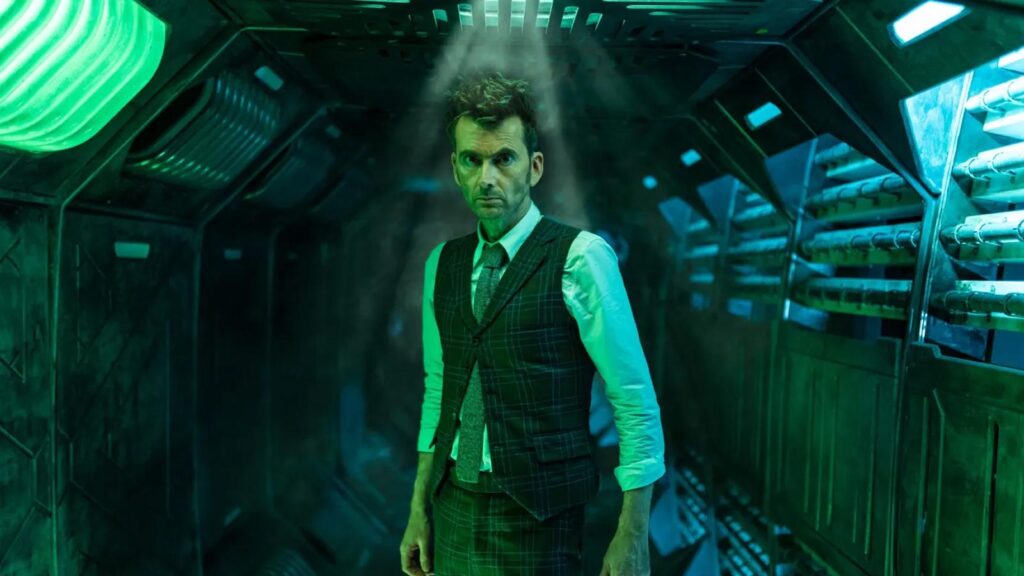
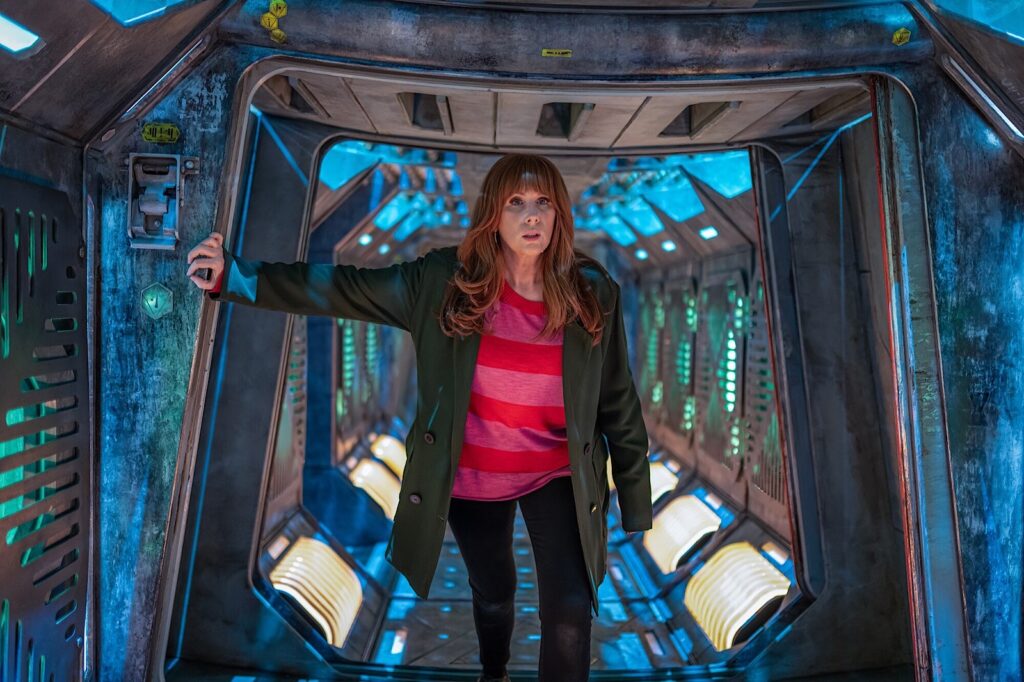
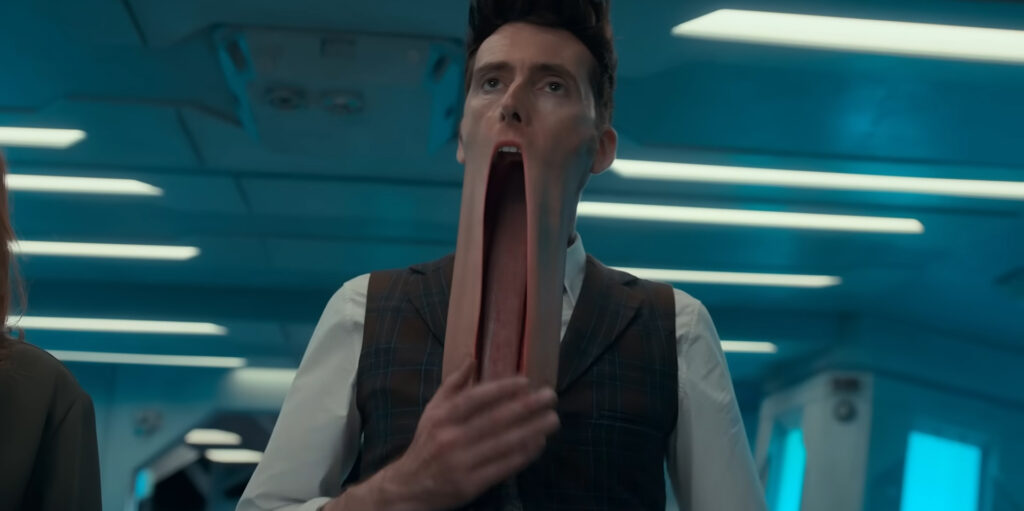
I got the impression that Davies was channelling Stephen Moffat, particularly Moffat’s ability to create unease and then distil it into a single striking image and phrase. “My arm is too long!” Donna complains. “My arm is too long!” And horrifically, her arm is too long, very much too long. And, ironically, this Donna’s fate will be sealed when her arm is only a little bit too long.
It turns out the travellers have encountered the “No-Things”: creatures floating about without being anything other than what they can sense from the universe beyond. All they know is what the creatures they encounter know – in this case, The Doctor and Donna. With no sense of shape, the “No-Things” struggle to maintain size and shape until they manage to put that to their advantage. We see them with hugely distended arms and as forms so gigantic that they block an entire corridor while still resembling The Doctor and Donna.
“Wild Blue Yonder” also cemented former showrunner Chris Chibnall’s continuity as ‘lore’. We again learn that the Doctor is not from Gallifrey, and we learn that The Doctor is now running away from the fact that s/he destroyed half the universe in The Flux event. However, it seems Davies has left Chibnall’s “show and tell” educational approach behind. This resulted in a terrible opening in which The TARDIS materialises on top of an apple tree, causing an apple to fall on the head of a man sitting below.
Has the apple dropped yet? Yes, it’s the 17th century, the man is Isaac Newton and the time travellers even give him a name for the “force” that caused the apple to drop – gravity or is it “mavity”? Ho, ho, ho. Except, we have already been told about this moment, with a slightly different twist, by Tom Baker in “The Pirate Planet” (1978). Sometimes it is possible to have watched too much Doctor Who.
For those interested, contemporary accounts suggest that fallen apples did form part of Newton’s interest in celestial dynamics, but not even Voltaire claimed that Newton was hit on the head by an apple or that this was a “Eureka!” moment in which the entirety of the Principia Mathematica suddenly sprang to Newton’s mind. And the word “Gravity” came from the Latin, “Gravis”, meaning heavy.
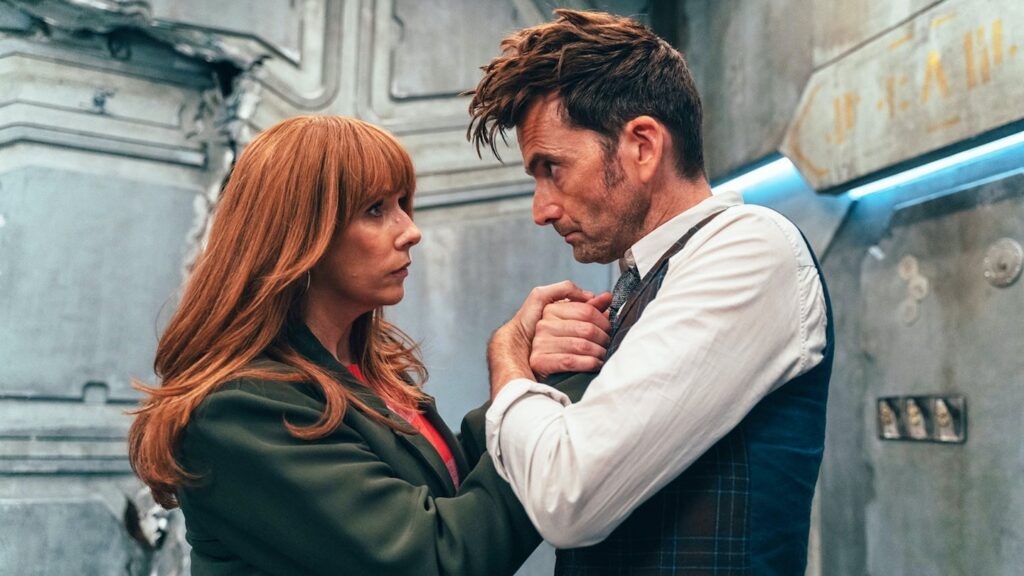
Apples aside, the core of “Wild Blue Yonder” is the still growing relationship between the two time travellers. The irritating opening scene establishes The Doctor’s jokey friendship with Donna, fun but superficial. As the story progressive, this is stripped away and the character’s darker feelings – fear and loneliness are exposed. We get to see Donna’s empathic understanding of the Doctor even if its basis may be repressed in her own subconscious.
Far from a sterile walk about a spaceship, “Wild Blue Yonder” proved a surprisingly affecting exploration of The Doctor’s and Donna’s friendship in a story about what it means to have deep, empathic feelings for others whether they be close by or a universe away. Goodness me, Tennant and Tate are going to be a tough act to follow.
Tim Robins
• Doctor Who – Wild Blue Yonder is available to watch now on BBC iPlayer in the UK and on Disney elsewhere worldwide
• Wild Blue Yonder had an overnight rating of 4.83 million, according to figures quoted by the BBC’s entertainment correspondent Lizo Mzimba, which marks a slight dip when compared to the first of the 60th anniversary specials, The Star Beast
• Wild Blue Yonder by Mark Morris will be released by BBC Books on 11th January 2024 | ISBN: 978-1785948466 | AmazonUK Affiliate Link | Bookshop.org.uk Affiliate Link
Based on a script by Russell T Davies, the spectacular second adventure for Doctor Who’s 60th anniversary features David Tennant as the Fourteenth Doctor and Catherine Tate as Donna Noble.
Mark Morris became a full-time writer in 1988, and a year later saw the release of his first novel, Toady. He has since published a further sixteen novels, among which are Stitch, The Immaculate, The Secret of Anatomy, Fiddleback, The Deluge and four books in the popular Doctor Who range.
His short stories, novellas, articles and reviews have appeared in a wide variety of anthologies and magazines, and he is editor of the highly-acclaimed Cinema Macabre, a book of fifty horror movie essays by genre luminaries, for which he won the 2007 British Fantasy Award. He also writes under the name of J. M. Morris.
To find out more about Mark Morris visit his website at www.markmorrisfiction.com
The founder of downthetubes, which he established in 1998. John works as a comics and magazine editor, writer, and on promotional work for the Lakes International Comic Art Festival. He is currently editor of Star Trek Explorer, published by Titan – his third tour of duty on the title originally titled Star Trek Magazine.
Working in British comics publishing since the 1980s, his credits include editor of titles such as Doctor Who Magazine, Babylon 5 Magazine, and more. He also edited the comics anthology STRIP Magazine and edited several audio comics for ROK Comics. He has also edited several comic collections, including volumes of “Charley’s War” and “Dan Dare”.
He’s the writer of “Pilgrim: Secrets and Lies” for B7 Comics; “Crucible”, a creator-owned project with 2000AD artist Smuzz; and “Death Duty” and “Skow Dogs” with Dave Hailwood.
Categories: Doctor Who, Features, Other Worlds, Reviews, Science Fiction, Television
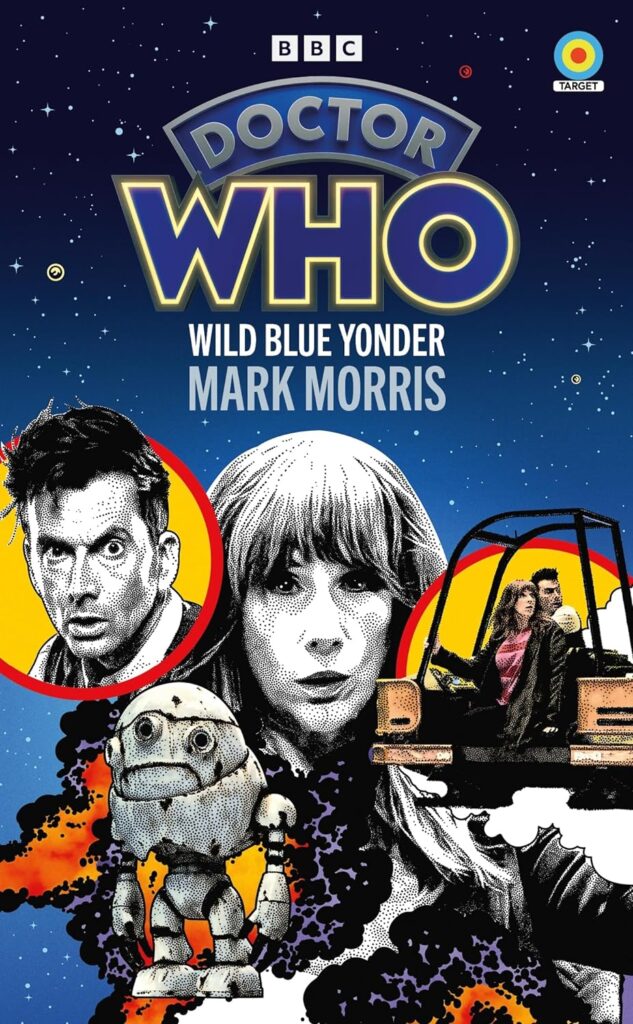
 Target Tales: Russell Cook reflects on recent Doctor Who adaptations
Target Tales: Russell Cook reflects on recent Doctor Who adaptations  In Review: Doctor Who Christmas Special – The Church on Ruby Road
In Review: Doctor Who Christmas Special – The Church on Ruby Road  In Review: Timeslides: The Doctor Who Artwork of Colin Howard
In Review: Timeslides: The Doctor Who Artwork of Colin Howard  In Review: Doctor Who – The Giggle
In Review: Doctor Who – The Giggle